Understanding FTM Bottom Growth: Signs, Process, and FAQs

Having a penis makes it one of the most sought out parts of the male identity. This is because many heterosexual males report feeling sensitive about their penile appendage, which prompts the issue of whether it is possible for FTM individuals to have a penis.
Consequently, bottom growth, a concept of hormone replacement therapy aiming to enlarge the clitoral width and length, comes into play when you are an FTM individual who seeks masculinizing therapy.
What is bottom growth?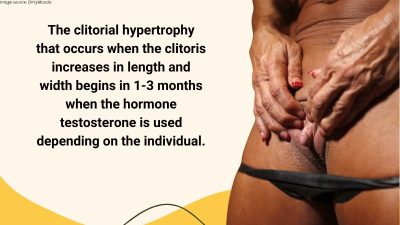
Bottom growth is the altercation in the genital area often experienced by people who are assigned the female anatomy at birth (AFAB) and undergo testosterone hormone therapy. The clitorial hypertrophy that occurs when the clitoris increases in length and width begins in 1-3 months when the hormone testosterone is used depending on the individual.
FTM bottom growth
An FTM’s bottom growth entails the transitionary process of using hormones to alter the female biological features to mimic masculine 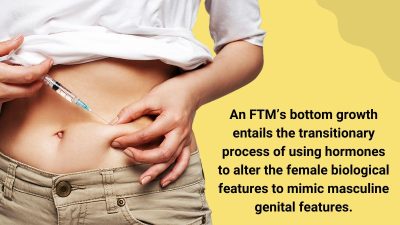 genital features. Under medical supervision, as an FTM, you will receive testosterone doses for a specific period of time to increase your clitoral size and length. Overall, FTM bottom growth will be one of the first changes you experience when on testosterone HRT.
genital features. Under medical supervision, as an FTM, you will receive testosterone doses for a specific period of time to increase your clitoral size and length. Overall, FTM bottom growth will be one of the first changes you experience when on testosterone HRT.
What are the first signs of bottom growth?
While every FTM will have their own individualized experience, the following are some of the signs of bottom growth to look out for.
- Increased clitoral sensitivity

You are likely to experience a heightened sensitivity in your clitoral region as one of the first changes to bottom growth. The sensitivity stems from increased blood flow during pumping or due to hormones. The sensitivity can translate to slight itch, pain, heat, pressure, and firmness due to a rise in testosterone levels in the FTM body.
- Bottom growth variability Onset
Everyone is different and is likely to experience signs of bottom growth in varying periods, between 3-6 months. For others, there will be a delay, which will prompt another dose of testosterone. However, as an FTM, you are likely to notice variability in signs of bottom growth from your peers or as your healthcare provider will tell you.
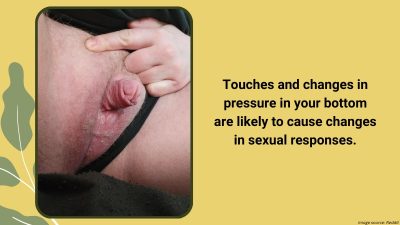
- Physical size changes
You will also notice some physical changes in your clitoris, especially in relation to size. Coming wrapped with this increase in size, you are likely to see that your clitoris may respond and look like a penis as the clitoral hood becomes more extended and broader. These come alongside changes such as discomfort and increased sensations in your genital areas.
- Frequent Arousal-like sensations
Once your clitoral bottom growth has transcended the average size and sensations are heightened in this area, many FTM individuals report feelings of erections. These erections indicate that the erectile tissues are now prominent in your bottom area, thus causing you to be aroused often.

- Sexual Sensitivity
Touches and changes in pressure in your bottom are likely to cause changes in sexual responses. The bottom growth can grow from 1-4 cm or 2.5 cm-4 cm. Another commonly reported sign is the increase in sex drive. The first time you notice your signs will depend on your testosterone dosage and the route of administration.
- Individual Bottom Growth Experience
As a rule of thumb, bottom growth is a personalized experience. Hence, it is crucial to note that everyone’s experience is different. The timeline and the extent to which changes occur will vary with each individual undergoing testosterone hormone therapy.
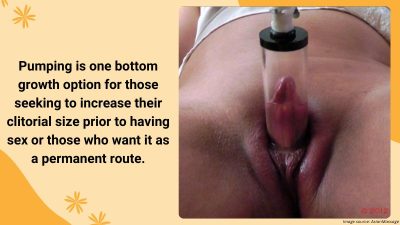 What is the process of bottom growth?
What is the process of bottom growth?
The process of bottom growth include:
Pumping is one bottom growth option for those seeking to increase their clitorial size prior to having sex or those who want it as a permanent route. For instance, the Trans Masc Pump aids in stimulating and fostering sensation in the clitoris. Made of a translucent cylinder, the clitoris is hooked to it to create a space in the genitals. This space gives the clitoris the space to grow as the tissue stretches beyond its usual size as more blood is directed to the region. The trans-masc pump can be used during the transition phase or before starting the transition of your bottom growth. Based on the design model, it comes with a lube to help with pumping. Always ensure that the bottom length you need aligns with the cylinder pump at least 50% wider than your clitorial width.
How to use the clitoral Pump
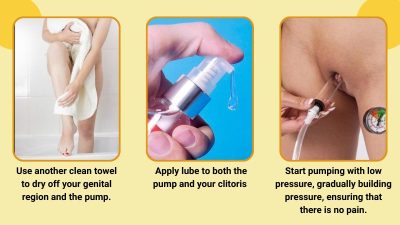
- Soak the pump in warm water while using a warm towel to heat and prepare your genital area.
- Use another clean towel to dry off your genital region and the pump.
- Apply lube to both the pump and your clitoris
- Start pumping with low pressure, gradually building pressure, ensuring that there is no pain.
- You can pump as frequently as you choose, and consistency is critical. A 10-minute interval working up to 30-40 minutes will reduce your chances of bruising and nerve damage.
- DHT (Dihydrotestosterone cream)
There are synthetic models of testosterone hormone therapy. The DHT cream, under the brand name Andractim, is made of a testosterone-induced substance that fosters bottom growth. Your surgeon will most likely advise you to apply DHT topical cream before delving into your bottom surgery as a way to foster and stimulate genital enlargement for transgender individuals. It is applied directly in the genital area to stimulate clitoral growth and is not to be used interchangeably with test gel or Androgen, which have more potent properties. DHT creams are available in online stores; however, it is always advisable to get one under the auspices of a gender-affirming expert. Since it is a controlled substance, you should always seek it overseas.
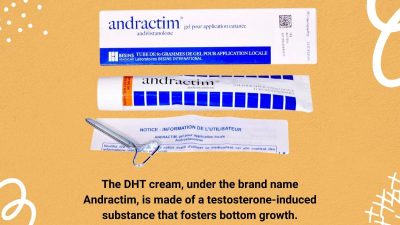 How to use the DHT cream
How to use the DHT cream
When applying the DHT cream, use 1 ml twice every day on the clitoris while gently rubbing until the cream is sucked into the clitoris. The consistent application should give you bottom growth experience. However, it is always crucial to note the side effects of DHT creams, which include loss of body hair.
- Testosterone gel
The Testosterone gel is a transdermal gel that contains testosterone and can enhance bottom growth. It has a less irritating effect on the genitals; however, it does not offer much clitoral growth compared to the other methods of bottom growth. When using topical testosterone gels and creams to achieve bottom growth, always be on the lookout for using excess, as too high testosterone in your bloodstream will be converted to estrogen. Also, these leave residual components on your skin, which you can transfer to your partner during sexual activity during skin-to-skin contact.
- Metoidioplasty
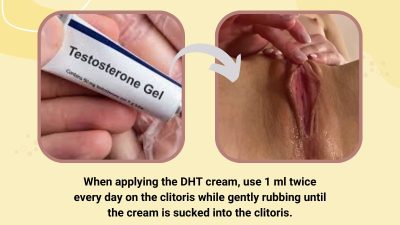
Metoidioplasty is a form of bottom surgery in which the surgeon alters the genital tissues of the clitoris to recreate a new phallus for an FTM individual. Metoidioplasty can offer a bottom growth increase of 2 to 4 cm or 2 cm to 10 cm, depending on your body.
What does testosterone bottom growth look like?
Testosterone bottom growth looks like an advanced form of clitorial hypertrophy. It is important to note that you may not see results in months. Bottom growth with testosterone will look like hypersensitivity and sensational feelings in the clitoral area. Since the clitoris is always enclosed in the hood, keeping it hidden and safe, one is likely to experience uncomfortable physical sensations as growth and size incepts.
The discomfort also presents itself as constant friction between the enlarged clitoris and your clothing hence the need to opt for softer fabrics. While it can be uncomfortable, it is rarely painless. Your bottom growth can also take the form of burning, itching, or mounting pressure on your genital area, but nothing too extreme to warrant medical intervention.
 How big can bottom growth get?
How big can bottom growth get?
For the most part, bottom growth involving androgen therapy grows at 1 to 4cm depending on your bodily response as an FTM individual. Other research indicates that the average length increase has been 2.5 cm to 4 cm for FTM individuals who sought therapy. In one year, an average growth of 4.6 cm has also been stated. Always bear in mind the bodily needs and varying responses to medication thus patience is a trait to uphold during this time.
Is there a way to stop bottom growth?
While everyone has different, unique responses to hormone treatment, if you feel like your bottom growth is rapidly making you uncomfortable, there is the option of lowering the dosage to manage the uncomfortable bottom growth process. For instance, a commonly used solution is finasteride, which activates testosterone into its precursor androgenic nature called the DHT. However, this product, finasteride, has other adverse side effects, which include loss of body hair, and can also ignite your monthly flow. Lowering dosage has been documented to reduce bottom growth
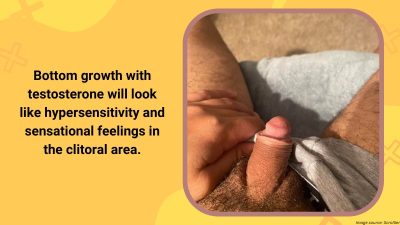
Conclusion
It is crucial to note that not everyone who yearns for changes using testosterone will respond the same way to bottom growth. Depending on the level of doses and your body type you are likely to experience your personal growth experience differently from everyone else. From hypersensitivity, itching, and mild pain, it is crucial to know that these effects will subside within the 3-month to a 3-year period in which bottom growth happens. Also note that no matter the time that your bottom growth occurs, you are not alone, and it can be vital to contact gender-affirming professionals for more support and knowledge. Patience and consistency is key to monitoring your bottom growth overall.
FAQs
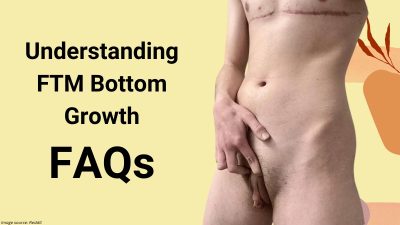 Is bottom growth reversible?
Is bottom growth reversible?
Bottom growth cannot be reversed once the process begins. However, there have been some anecdotal testimonies of FTM individuals who, on low doses, did not experience a profound bottom growth. Since there is limited scientific documentation on the same, to reduce bottom growth simply lower your T dose.
Is FTM bottom growth worth it?
The answer is a resounding ‘yes’, and it is worth it. However, it is not feasible for every transguy. Consequently, it is essential to delve 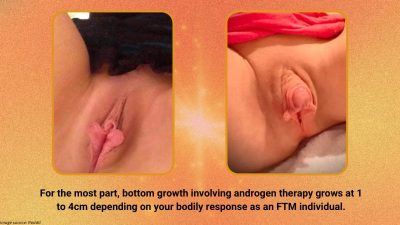 into it for some months or a year to see some results. It may take some time but you are likely to see the rewards after some time.
into it for some months or a year to see some results. It may take some time but you are likely to see the rewards after some time.
Will my bottom growth alleviate my gender dysphoria?
Yes, your bottom surgery will help alleviate your gender dysphoria by reducing the psychological stress linked to your genital features. An enlarged clitoris can be a euphoric feeling that will enhance your confidence in the bedroom and public since you will feel more male-identifying.

 Basic Packers
Basic Packers Pack & Play
Pack & Play STP
STP